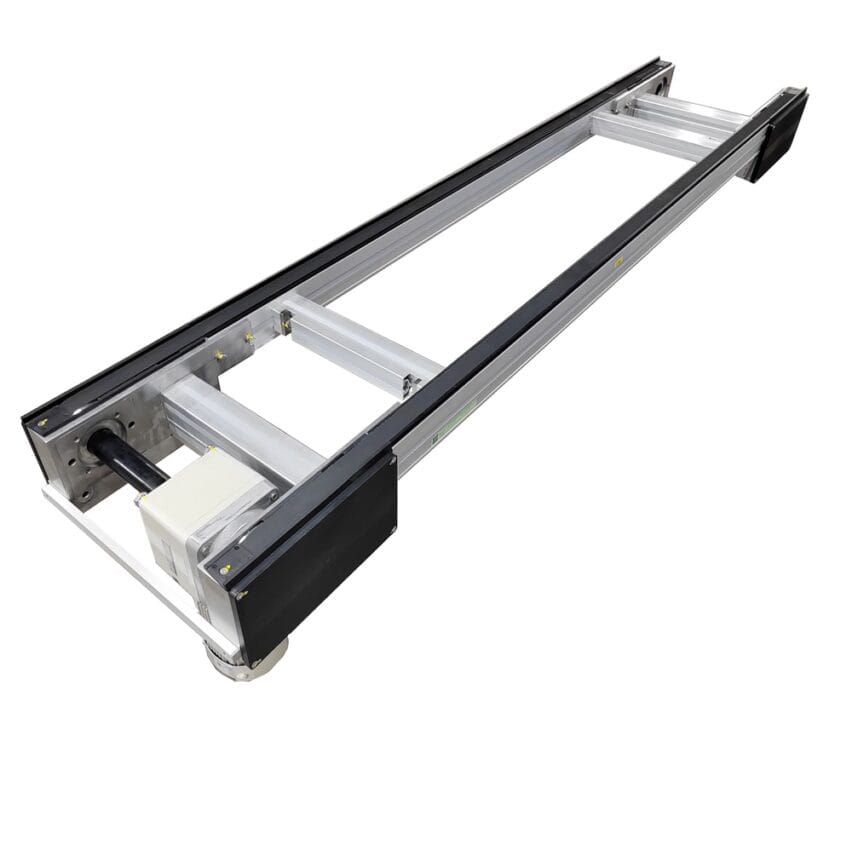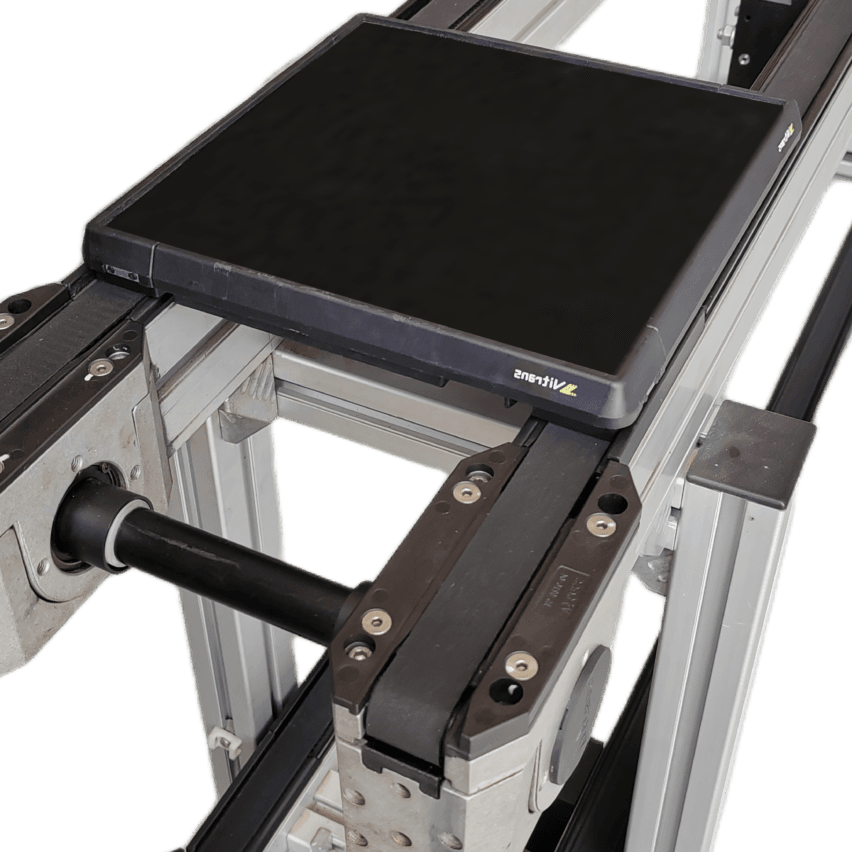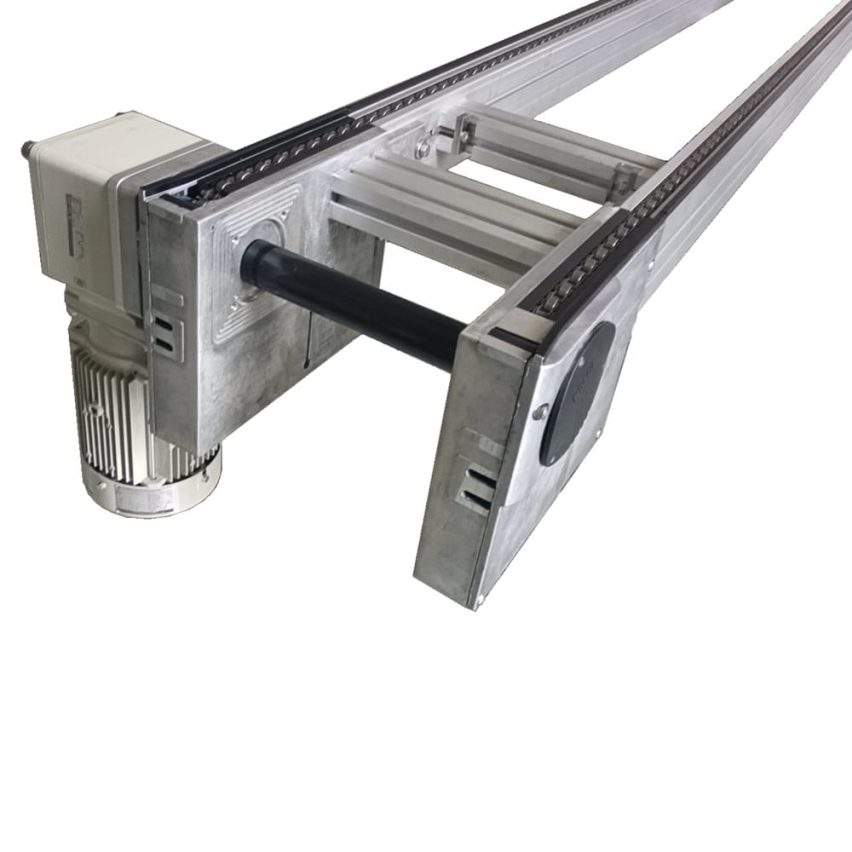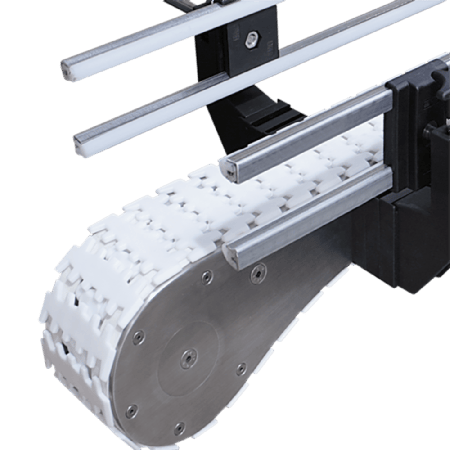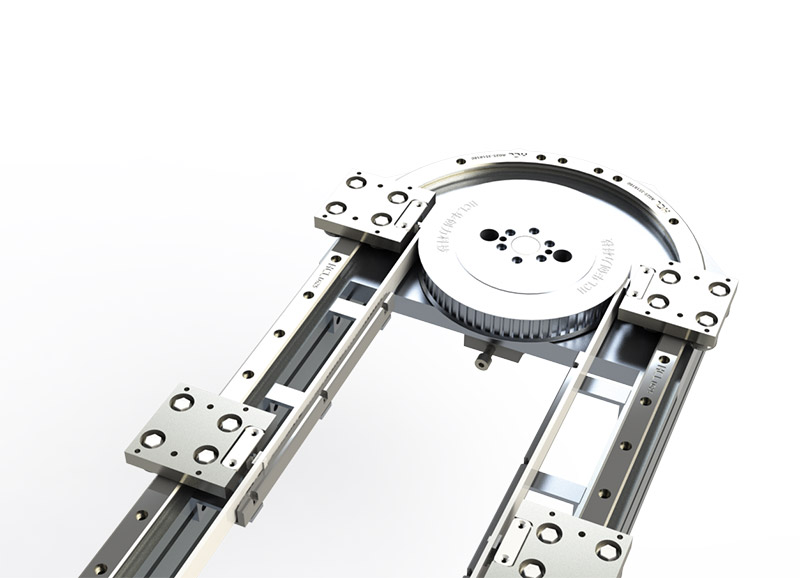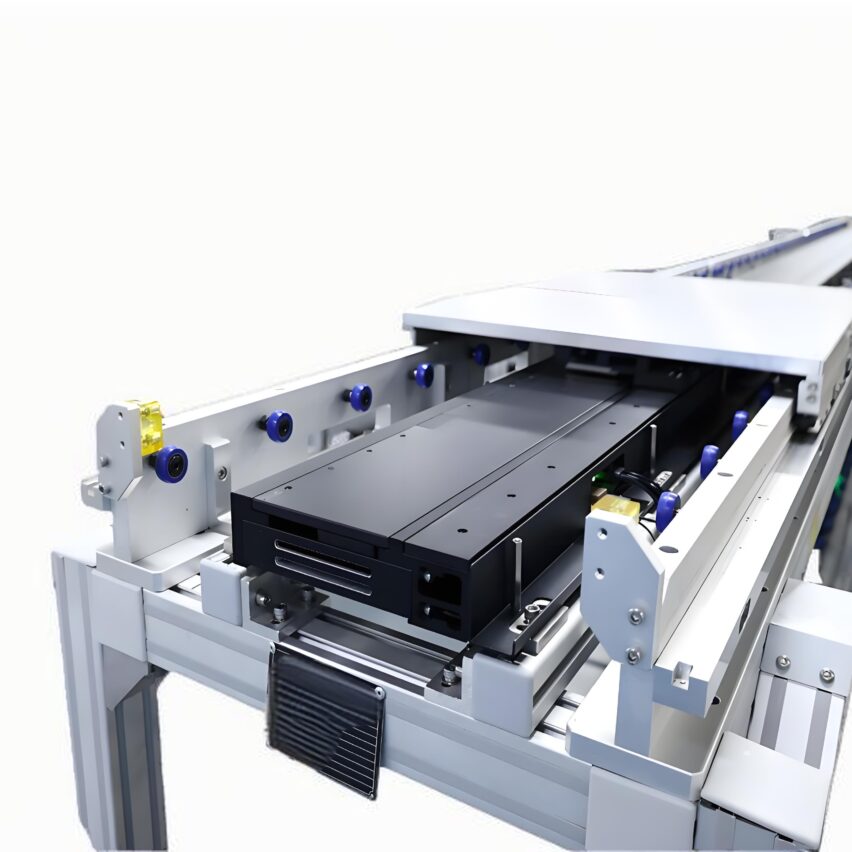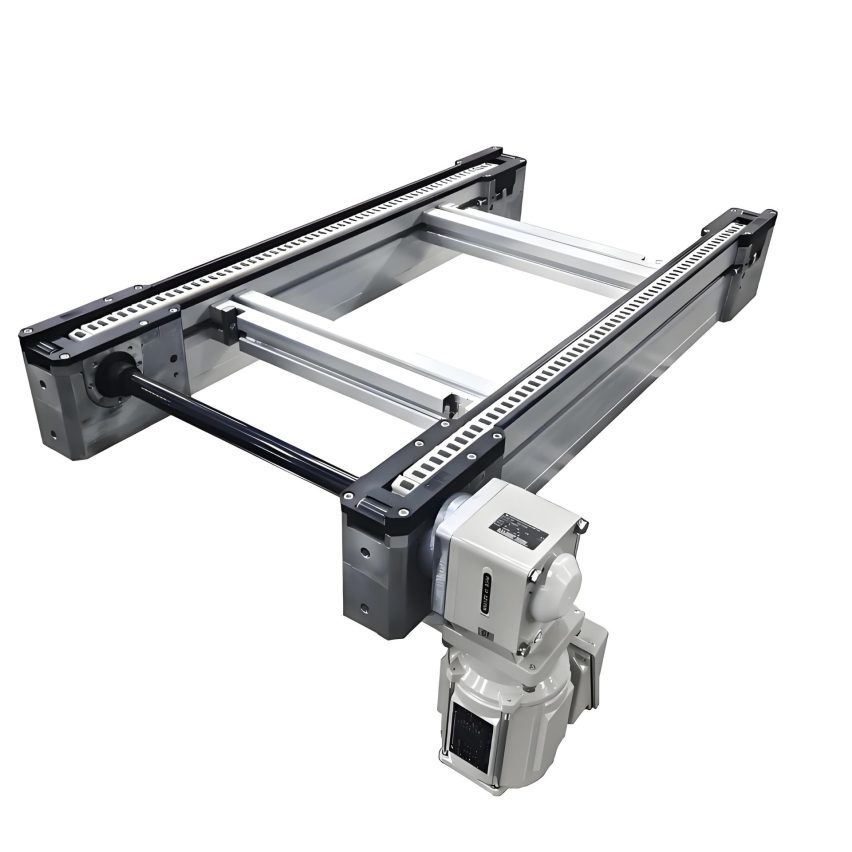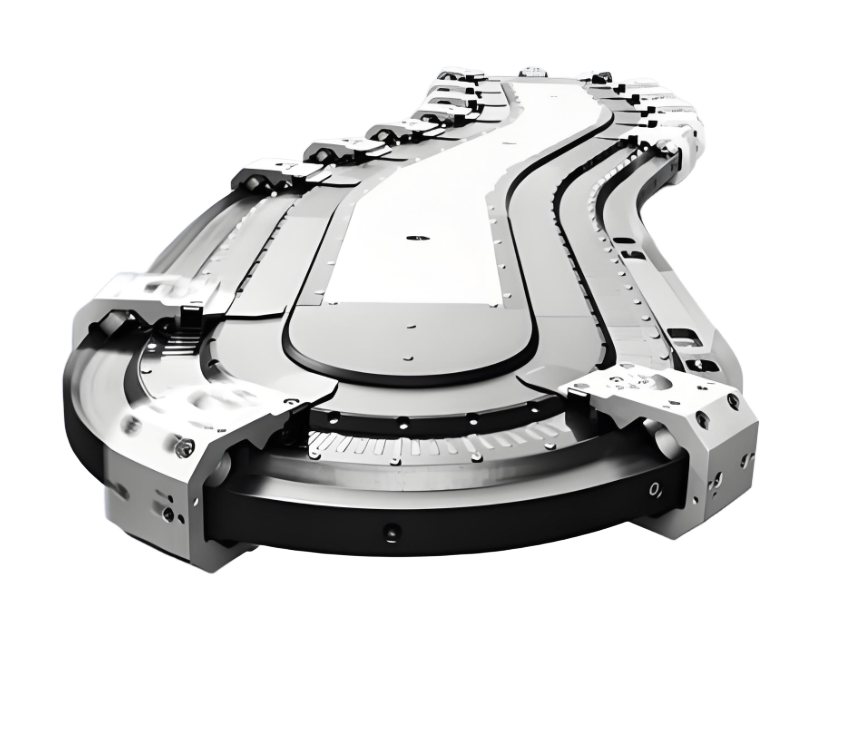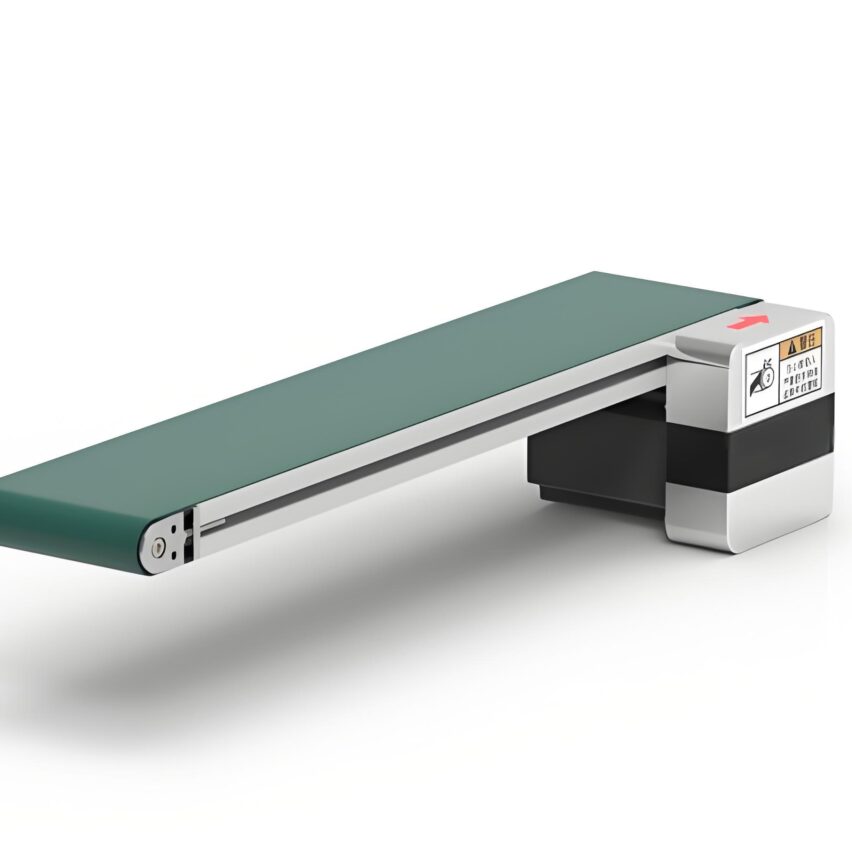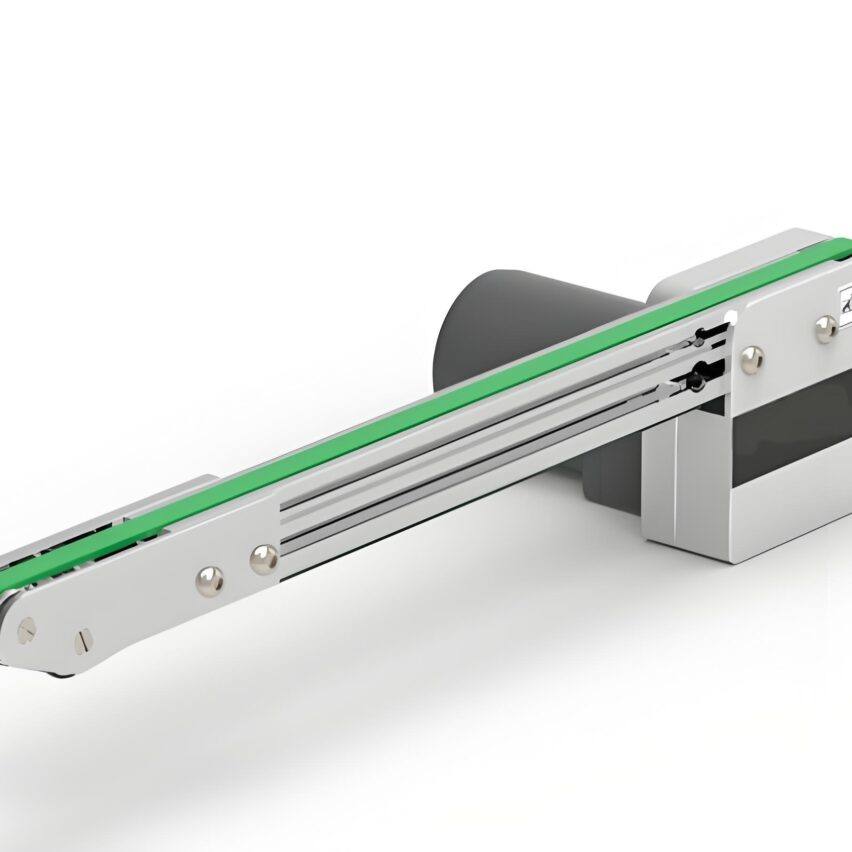Against the dual backdrop of escalating industrial land costs and surging demand for flexible manufacturing, theSmall up and down cycle speed chain凭借其立体化布局与三倍速传动能力,正成为现代工厂Space optimisation的关键技术。这种融合机械增速原理与垂直循环设计的输送系统,不仅将平面空间占用压缩40%以上,更通过Dynamic Speed Stacking MechanismTo achieve the multiplier effect of efficiency. This article will be in-depth dismantling of its technical core and innovative application logic.
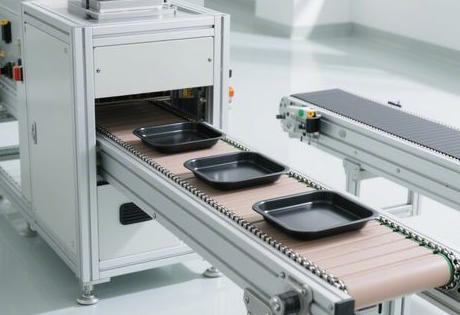
I. The physical code of the multiplier chain: efficiency jumps driven by diameter differences
The core secret of the small up and down cycle multiplier chain is its uniqueDouble Diameter Roller Structure. While the inner chain roller (diameter d) rolls along the guideway to generate the base velocity V₁, the outer chain roller (diameter D) rotates itself through frictional contact with the work plate, generating the additional linear velocity V₂.Velocity stacking formulaV = V₁ × (1 + D/d) Revealed: when D = 2d, the speed of the work plate can be up to 3 times the speed of the chain.
Structural Innovation Breakthrough Points::
- Engineering Plastic Composite RollerCarbon fibre reinforced nylon material reduces friction coefficient to 0.08 and reduces weight by 40%, which is suitable for the lightweight demand of small cables.
- Differential non-slip textureLaser engraved diamond-shaped grooves on the surface of the roller, static friction coefficient is stable at 0.08±0.01, avoiding high-speed start-stop slippage.
- Distributed Hub MotorsBuilt-in 500W brushless motor for every 3m chain section, CAN bus synchronous control, speed deviation ≤0.3%.
Personal experiments have revealed thatIn the -10℃~50℃ temperature change test, the speed fluctuation due to thermal expansion of the traditional aluminium alloy rail was 8.2%. By embedding nano-sized beryllium-copper alloy spacers at the seams, we were able to compress the fluctuation to 0.9% - critical for temperature-sensitive chip packaging production lines. temperature sensitive chip packaging lines.
II. Upper and Lower Cycle Architecture: A Spatial Revolution in the Vertical Dimension
Conventional single-deck multiplier chain 30% space is occupied by empty return trips, small up and down circulation system through thethree-dimensional designBreaking this logjam:
upper working level
- Precise height control in the ergonomic zone (750±50mm)
- Triple-speed chain-driven work plate (20m/min)
- Electromagnetic cushion stopper for ±0.3mm stopping accuracy
Lower Return Channel
- Return of unloaded pallets at base speed (1m/min)
- Built-in rail height of only 85mm reduces space requirement 70%
Vertical Articulation Hub Innovation
- Three-stage jacking transplanter: Pre-acceleration → Uniform lift → Secondary acceleration matching
- Pneumatic-guide composite anti-sway mechanism: Offset <0.1mm
- Scissor Folding Structure: Volume reduction of jacking mechanism 62%
III. Performance Advantage: Industrial Evolution Behind the Data
Space efficiency leap
In a real test in a mobile phone motherboard factory in Shenzhen:
- Reduction of production line footprint by 42%
- Capacity density per unit area increased by 220%
- Material turnaround time compressed from 8.7 hours to 2.3 hours
Energy consumption and reliability breakthroughs
- Start-stop response 0.3 seconds (1.5 seconds for conventional structures)
- Distributed Drive Reduces Energy Consumption 45%
- Diamond-like pin coating extends chain life to 36,000 hours
Precision Control Evolution
plaintextmake a copy of| Technical Measures | Precision Improvement Effect | Technical Principle | |-------------------|---------------------|-----------------------| | Laser Ranging Closed-Loop Feedback | Stopping Error ±0.15mm | Real-Time Speed Compensation Algorithm | | Gas Spring Damping | Vibration Amplitude <5μm | Low Frequency Vibration Energy Absorption | | Electromagnetic Cushion Damper | Eliminate Bounce Displacement | Magnetic Damping Instantaneous Energy Dissipation |
IV. Precise Adaptation Strategies for Application Scenarios
Electronic precision assembly
- Mobile phone camera module inspection: 160×160mm static protection tray (surface resistance 10⁶~10⁹Ω)
- Chip burning station: constant temperature delivery environment with temperature control accuracy of ±0.5℃.
Medical Aseptic Workshop
- Surgical instrument assembly line: 304 stainless steel body + UV sterilisation module
- Pharmaceutical Dispensing Line: Cleanroom ISO Class 5 Dynamic Cleaning Design
Flexible Manufacturing Paradigm
- 5-minute changeover system: Modular tooling plate fixtures for quick changeover
- Six-Product Mixing Mode: RFID identification accuracy 99.8%, support co-line production
Industry Insights: A case study of a retrofit in an automotive electronics factory shows that the up and down cycle structure has compressed the line restructuring time from 72 hours to 8 hours. This validatesStereoscopic cycle + modular driveIt's the golden combination for flexible manufacturing.
V. Intelligent Maintenance and Operational Prohibited Areas
IoT Predictive Maintenance System
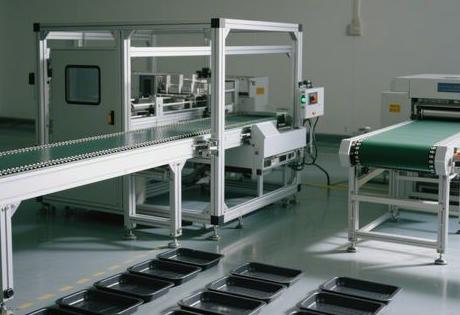
- Vibration sensor warns of chain wear (95% accuracy)
- Automatic lubrication replenishment by mileage (consumable savings of 40%)
Rigid Operation Taboo
- temperature restricted area: Brittleness of engineering plastics due to <-10°C environment
- load-barred zone: Eccentricity > 5cm triggers roller misalignment.
- restricted area: Organic solvents distort nylon rollers.
The next decade: from mechanical drives to data nerves
随着工业4.0技术渗透,Mini Speed Chain将经历三重进化:
- Perceptual Layer Upgrade: Integrated quantum dot stress sensing coating on chain links for real-time monitoring of deformation thresholds
- Decision Level IntelligenceAI dynamic speed model responds to order fluctuations with ±15% capacity regulation tolerance.
- energy autonomy: Piezoelectric Ceramics Recover Vibration Energy, Auxiliary Power Supply Energy Saving 30%
A head sensor company predicts that in 2028 60%'s multiplier chain will carry theSelf-organising flexible cluster systems--The line reorganisation time will exceed the one hour limit, realising a true "liquid factory".
Core Q&A on small up and down cycle doubler chains
Q1: Why is the up and down cycle structure more suitable for small workshops?
A1: Its core values arespatial folding effect--The return track is integrated into the lower level through vertical diversion, reducing the flat occupancy by 42%, and the floor height is only 1.5 metres to build a complete circulation system, which is especially suitable for the renovation of old factories with restricted floor height.
Q2:How to solve the vibration interference during high-speed return?
A2: Innovative AdoptionPneumatic-mechanical composite anti-sway mechanismThe multi-stage deflector plate is set up in the lifting and transplanting process, and the air spring absorbs the low-frequency vibration energy, so that the deflection of the work plate is <0.1mm, which is much lower than the threshold value of 0.5mm required for precision assembly.
Q3: Does the miniaturised design sacrifice load capacity?
A3: AdoptionTopology optimisation + material innovationDual-path breakthroughs:
- The skeleton chain plate is reconstructed by finite element analysis, and the weight reduction of 30% still maintains 200kg/m linear load;
- Carbon fibre reinforced nylon rollers have a compressive strength of 120MPa, comparable to lightweight alloys.

